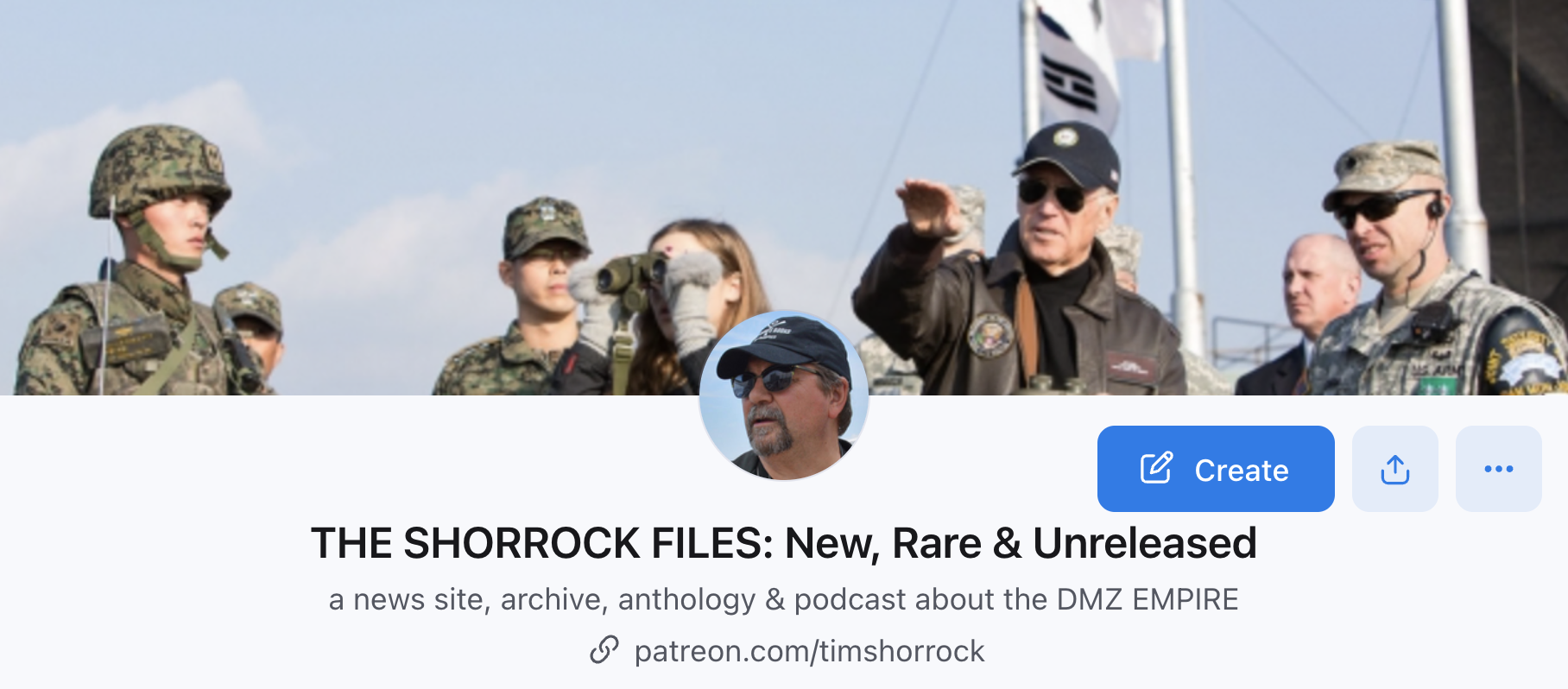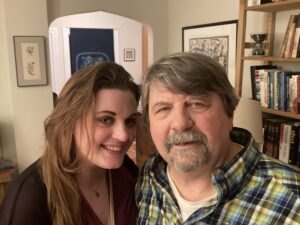This is the first posting of what will be an online database of the 3,500 declassified US government documents on the US role in the Gwangju Uprising of 1980. The original copies of the documents known in Korea as the “Cherokee File,” are permanently stored (and are available for research) at Gwangju’s 5.18 Archives.

BOX 1, FILE 1: KWANGJU – US REPORTS
This file contains the day-to-day reports from the US Embassy to the State Department about the uprising (“riot”) in Gwangju, including the most detailed US explanations of what happened during the period from May 18 to May 27 and the orders from Secretary of State Muskie to evacuate all US citizens in the city. It also contains US reports about Gwangju during the months after the uprising. The most crucial documents are the situation reports (“Sitreps”) from Ambassador Gleysteen and a long eye-witness report on the uprising written for the US Embassy by a US missionary who was in Gwangju throughout the period from May 18 to May 27. [*= key document]
*5/17 – “Crackdown in Seoul.” This is Ambassador Gleysteen’s initial report on Chun Doo Hwan’s declaration of martial law on May 17, 1980. He wrote that a part of the Korean military leadership – the identities are blacked out – “has ignored legitimate authority in the ROKG to institute a tough crackdown on students and probably the entire political spectrum.” From this cable, it appears that Gleysteen was not informed beforehand about the declaration of martial law or the deployment of military units to the nation’s campuses. He is informed of the deployment by “American witnesses” at Ehwa University. “It took us almost an hour of inquiries with the Blue House, Police and KCIA to find out what had happened. When we did, we were told not only that the campus raid occurred but also that ‘extraordinary martial law’ would be imposed throughout Korea (including Cheju Island).” Gleysteen wrote: “Our visceral reaction to what has happened is obviously negative. Just as the students did earlier this week, the military have not taken the law into their own hands, ignored legitimate channels, once again cut the USG out of the information net, and thrown down the gauntlet to would-be troublemakers.”
*5/21 – “The Kwangju Crisis.” This document is Gleysteen’s report about the events in Gwangju of May 21, the day of the “first firing” and massacre and, later, the withdrawal of Chun Doo Hwan’s paratroopers from the city. For Gwangju, this day is still seen as one of liberation from the martial law forces, but to Gleysteen it is extremely alarming for both the U.S. and the South Korean military (it should be read with the equally significant DIA cable written on May 21 from BOX 1, FILE 2: “DOD-DIA Reports, December 1979-May 1980.”)
Gleysteen writes: “The massive insurrection in Kwangju is still out of control and poses an alarming situation for the ROK military who have not faced a similar internal threat for at least two decades…At least 150,000 people are involved.” Significance: Gleysteen recognizes that Gwangju is a “massive insurrection” yet believes it poses an “internal threat” to the Korean military. In using that term, he appears to be adopting the language of Chun and the Korean martial law forces, who are the actual “threat” to the future of South Korea.
Gleysteen’s cable includes no references to casualties, which are described in the DIA report on May 21. Instead, the only numbers he describes are the “2,000 leftists” he claims are contained in a Kwangju prison where the Korean military is “concentrating [its] defense.”
Gleysteen says: “The authorities are trying to get a ceasefire so that they can talk to the rioters about their demands for an apology, release of prisoners, and removal of martial law forces. While all these moves seem intelligent, they have not worked so far and the December 12 generals obviously feel threatened by the whole affair.” He continues to counsel “moderation” on both sides but urges the US government not to make any statement. “I am against any local American statement because it could backfire with charges that we were in collusion with the government.”
*5/23 – Korea Sitrep 15:30. This document show that JCS Chief General Lew, General Wickham’s equivalent at the Combined Forces Command (CFC), was a key source to the US Embassy on Korean military movements. In this document, Lew reports that the Korean Army will re-enter Gwangju on May 24. Document states that David Miller, the State Department public affairs officer (PAO), was in regular telephone contact with US Air Force personnel at Kwangju Air Base. It also reports on the Korean news coverage and government censorship. In the document, Ambassador Gleysteen states that “prospects have improved in the last 24 hours for avoiding armed suppression of armed disorders in Kwangju. This will not however be fully clear until security forces have succeeded in peacefully re-entering the city.” Yet the decision had already been made for military action and General Lew had informed him that the Army was ready to move into Gwangju on May 24, the next day.
5/24/1980 – Gleysteen describes a “truce of sorts” in Gwangju and notes that some 2,500 weapons have been handed in as of 9 AM. He reports that David Miller, the State Department Public Affairs Officer, is at Kwangju Air Force Base and is returning to Seoul. He also has apparently received reports from the DIA and “disturbances” outside of Kwangju, but “rather low-level and no longer spreading.” He reports that “some Kwangju diehards have reportedly taken to the hills – an old Cholla tradition but one which in modern times has not produced self-sustaining resistance movements.”
5/24 – Document reports that Kim Jae Gyu, Park’s assassin, was executed on this day and that US military radio broke the story.
*5/25 – Korea Sitrep 12 noon. US reports become more grim, with “unconfirmed report” of armed clash between troops and “an armed convoy of civilian diehards outside of Kwangju.” Also reports of a “a small diehard faction…reportedly agitating citizens.” States that military roadblocks checking traffic entering Seoul have become more numerous, with the intent to “protect the capital from Kwangju agitators and also from infilitrators,” a “number of whom have been landed south of Seoul in the last few days.” This is a rare report about North Korean infiltration but is not verified. The document also includes Gen. Wickham complaints of Korean military “distorting” reports that US has “encouraged the use of troops.” Verifies 5/24 report that US military radio reported Kim Jae Gyu execution.
*5/25 Sitrep for Holbrooke and Armacost. Reports become very grim, with reports (later ruled as false) tht “radicals appear to be in charge. People’s courts have been set up and some executions have taken place.” Confirms again that Korean military will move against Kwangju over next 24-36 hours: “The ROK Chairman of the JCS has promised to inform us before the move takes place.”
5/26. More grim and false reports of “people’s courts and executions,” with the caveat that “these have not been confirmed and should be treated with caution.” Charges that “radicals” have created a “warlike atmosphere” in Gwangju – exactly the opposite of what residents and missionaries observed. States “we know 20th division and special forces battalions are poised” to move into Gwangju. Describes meeting between Wickham and top Korean military officials to protest KBC “portrayal…of the US position…as one of support of the use of troops.” Again, General Lew a key source.
5/26. Cable to Holbrooke, informs him that reports of executions “not fully confirmed and should be treated with caution.” States that Gen. Chun Doo Hwan “under great pressure” to move against Kwangju. General Lew informs Wickham that “ROK troops will move into Kwangju at midnight Monday.”
5/26. Gleysteen meeting with Blue House. Much is blacked out. Gleysteen tells Kwang Soo Choi that “any military action…be done in ways that minimize the loss of life.” But adds: “We were not telling the government to refrain from military action since we recognized the dangers of an extended period of lawlessness in Kwangju.”
*5/27. Gleysteen informed at 6 AM by martial law authorities “that ROK forces had moved to retake Kwangju” at 3:30 AM. “Special Forces (later identified as the c3rd, 7th and 11th brigades) led the assault, along with eight tanks of the 20th Division.” Cable plays down casualties – “some” rebels killed and captured. US embassy “standby watch” to end at 2300 (11 PM) May 27.
*6/10. Very important insider report to US embassy from a Presbyterian missionary who was in Gwangju throughout the period from 5/18 to 5/27. He says: “What we saw in Gwangju was a demonstration of free people pushed too far. I liken it to the Boston Tea Party.” He adds: “The May 18 incident was not communist-inspired or infiltrated or infected.”
6/24. Document is the draft text for congressional testimony on Kwangju by Deputy Secretary of State Warren Christopher. He says: “US had no advance knowledge” of deployment of Special Warfare Command. He says: “the Korean authorities requested [Wickham] to release certain units of the Korean armed forces temporarily from their responsibilities” under the joint command. “This was done.”
7/31. Report of a 4-day visit by US embassy officer to Kwangju (Monjo?). He says people in Kwangju and Mokpo “likened [Chun’s] methods to those of the Nazis.”
9/30. Another US embassy report from Kwangju. Chun Doo Hwan “is a hated and feared man.”
View links below to view documents in PDF format:
- Crackdown in Seoul | May 17, 1980
- Seoul situation report | May 20, 1980
- The Kwangju crisis | May 21, 1980
- Evacuation of Americans from Kwangju | May 23, 1980
- Korean situation report | May 23, 1980
- Kim Jae Gyu & fellow assassins executed | May 24, 1980
- Korean situation report | May 24, 1980
- Korea monitoring group situation report no. 7 | May 25, 1980
- Korean situation report | May 25, 1980
- Korean situation report, 2400 | May 26, 1980
- Meeting with Blue House | May 26, 1980
- Korean situation report no. 8 | May 26, 1980
- Korean situation report, 1500 | May 26, 1980
- Korean situation report, 0900 | May 27, 1980
- Korean situation report, 1600 | May 27, 1980
- Korean situation report, 2200 | May 27, 1980
- Korean situation report, 1600 | May 28, 1980
- Relief & public relations activity in Kwangju area | May 29, 1980
- ROKG issues its official report on Kwanju incident | June 3, 1980
- Insider’s account of Kwangju Riot | June 10, 1980
- Draft text for Wolff subcommittee meeting | June 24, 1980
- Assessment of the mood in Kwangju | July 31, 1980
- The mood in the Chollas | Sept 30, 1980

